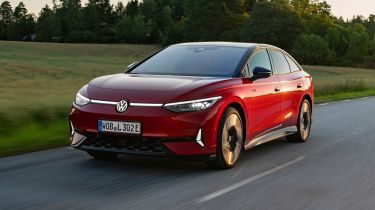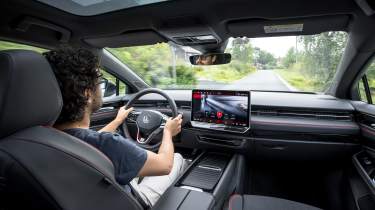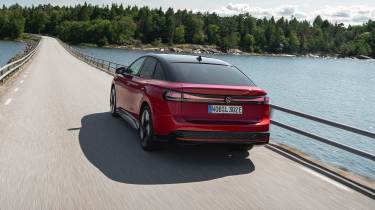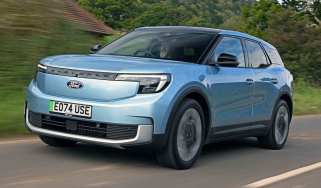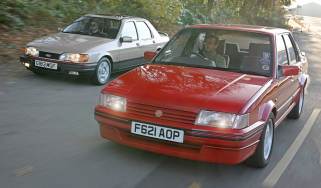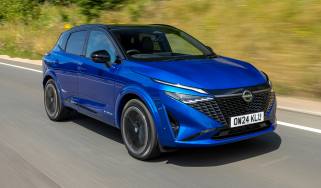New Volkswagen ID.7 GTX 2024 review: VW’s most accomplished EV yet
VW’s ID.7 flagship takes big steps forward in terms of ride and handling, but at a cost

Verdict
The new Volkswagen ID.7 GTX is the most polished and refined model yet from Volkswagen’s fully-electric ID. family. Indeed, thanks to its impressive ride and refinement, spacious well-built cabin and generous performance, the recipe has never felt more desirable. It is expensive, and despite the GTX badge, it’s no sports car. But this is further evidence that Volkswagen is finally finding its feet with its all-electric sub-brand.
This is the Volkswagen ID.7 GTX: a new flagship variant of the spacious all-electric ID.7. But before we get too far into the nitty gritty, it’s first best to establish that GTX is not an all-electric alternative to GTI. Despite VW’s ambitious initial marketing strategy, the plan has softened somewhat, as the maker is at pains to point out.
So the ID.7 GTX is not a true sports saloon, but a more subtle expression of how much progress Volkswagen has made with its ID range, both in terms of power and performance. The ID.7 is a big car, and regardless of body style (it’s available as a hatchback or Tourer estate), is a spacious, versatile and refined hauler with high-mileage acuity and efficiency in mind.
It’s based on the largest iteration of the MEB platform, and therefore picks up a big new 86kWh battery pack. It powers a motor on each axle, for a peak output of 335bhp; the hatch will do 0-62mph in 5.4 seconds, with the Tourer taking just a tenth longer.
More reviews
In-depth reviews
With a relatively large battery, VW’s quoting an impressive range of 359 miles, with the GTX capable of DC fast charging at speeds of up to 200kW. This will top up the battery from 10-80 per cent in around 30 minutes. Punch a fast-charging destination into the sat nav and the car will also automatically pre-condition the battery for peak charging performance.
All of these figures do a good job of backing up VW’s ‘flagship’ claim on paper, but the results can only really be felt on the road. And first and foremost, the GTX rides wonderfully. All cars run on 20-inch wheels as standard, but our test car was on the larger 21-inch rims, and had no trouble dealing with the relatively rough roads of rural Sweden.
Lots of this has to do with the DCC adaptive dampers, which are standard fit on all UK cars. Even in Sport mode, which usefully tightens the car’s body, the ID.7 didn't exhibit any of the harshness we’ve come to experience in similar EV models in the past.
This only contributes to the car’s exceptional interior refinement. Wind noise is well suppressed and thanks to a pair of excellent front seats, it’s a car that makes driving hundreds of miles a calm and relaxing exercise. Compared to petrol or diesel models from VW’s extensive model range – such as a high-spec Volkswagen Passat or Skoda Superb – there are tangible improvements here.
When the roads get twisty, the ID.7’s underlying handling and balance is nicely sorted. We wouldn’t go expecting Audi S4-levels of control, but then it never feels flummoxed or out of its depth either. Of course, with its big battery comes lots of weight (2,365kg), but the hardware that’s been integrated to keep it all under control is superbly managed.
Beyond the driving experience, though, Volkswagen’s also made forward steps in terms of interior design and presentation. The dashboard, while fairly minimalist and clean, features the right sort of materials and finishes. It feels solid, well built and even plush, thanks to the soft-touch dash front.
We’re still not fond of the digital interfaces, but VW’s continual improvements in this department does mean that while some of the ID.7’s controls still grate, there’s now enough screen real estate to place permanent buttons on-screen, such as shortcuts to the media, nav and safety systems. There’s also a static bar along the bottom for commonly used air conditioning functions. The motorised air vents are more of a gimmick, unfortunately, and still require too much concentration to operate.
Immediately ahead of the driver is a slim information display that offers limited information and customisation, but the key stats are there and easy to read. It works especially well with VW’s augmented reality head-up display, which is capable of showing considerably more – including sat-nav directions and economy data.
Space inside the cabin is also extremely impressive, with loads of room in the rear – not just for legs, but shoulders and heads too. The car has been designed to fit three adults in the back, something it manages easily. The 532-litre boot is also massive.
In short, there’s little to gripe about. But at around £60,000, it’s impossible not to consider rivals that have even more range, tech and performance. True high-performance EVs, like the brilliant Hyundai Ioniq 5 N cost only around 10 per cent more. And at the luxury car end, cars like the BMW i5 and Mercedes EQE are priced around the same.
But if the figures add up, there’s no reason not to take the plunge. The new ID.7 GTX feels just as much about retribution for VW as it is about clean, emission-free motoring.
| Model: | Volkswagen ID.7 GTX |
| Base price: | £61,980 |
| Powertrain: | 86kWh battery, 2x e-motors |
| Transmission: | Single-speed automatic, all-wheel drive |
| Power/torque: | 335bhp/553Nm |
| 0-62mph: | 5.4 seconds |
| Top speed: | 112mph |
| Range/charging: | 359 miles/200kW 20-80% in 20 mins |
| Length/width/height: | 4,961/1,862/1,535 |
| On sale: | Now |

